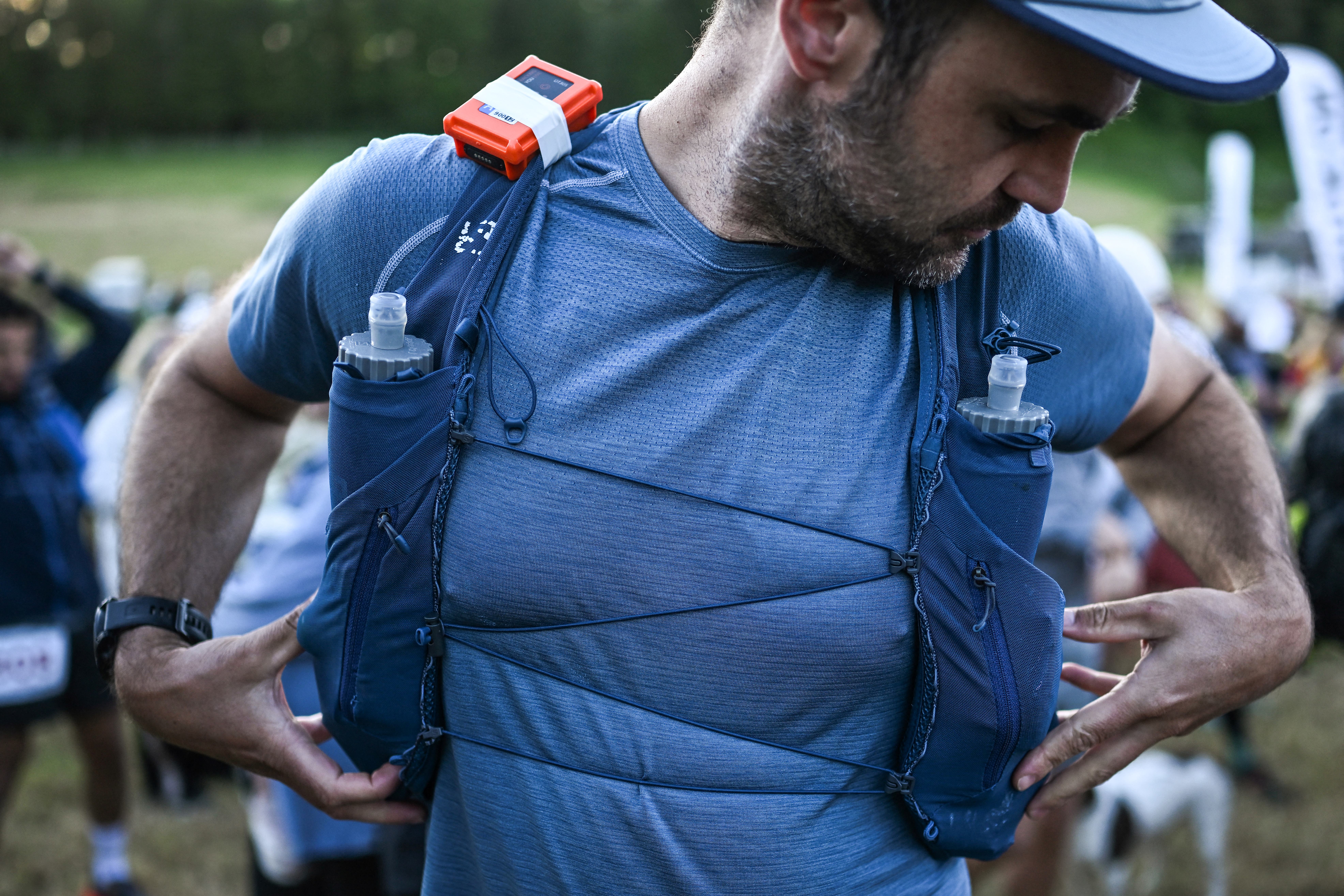Ten tips on how to smash your marathon training according to a PT — whether it’s your first or your fifteenth time
*re-downloads Runna*


Raise your hand if you got peer-pressured into doing some kind of half-marathon / full monty marathon after seeing everyone running in Battersea Park. Yup, thought so. Clearly, the days of being lapped by sweaty and smug runners at some ungodly hour in the morning whilst you’re trying to enjoy a little hot girl walk got to you, too. And now, you’re probably faced with the prospect of an upcoming marathon, which all you’ve done to prepare for is download Strava, buy a cute running vest, and do a couple of laps of your local common.
Well, there may be sunlight at the end of the park run yet, as Omar Mansour, Personal Trainer at elite London gym KXU, has shared ten tips on how to prepare and smash your marathon - although it definitely works for any race. After all, for some of us, a 5k is the equivalent of a marathon, really.
- 10 of the best men's running shoes to smash your next parkrun: Top affordable runner picks
- 7 of the best HOKA trainers for men that are as great on the street as they are on the track
- This is the the world’s most popular running shoe
1. Build gradually
According to Mansour, by increasing your weekly mileage by no more than 10%, you can avoid those dreaded injuries which seem to crop up at the worst times. Add a deload week - an easier week in layman's terms - every 3-4 weeks in your training cycle is key to keeping your training steady.
2. Don’t skip speed work
Probably advice you didn’t want to hear, as speed work can literally feel like the devil’s hopscotch at times, but by incorporating intervals, tempo runs, and threshold sessions, you’ll be able to sharpen your efficiency and race pace.
3. Practice race pace
It’s easy to get a little complacent slash go into denial when training for a race, thinking that your usual 5k plod done six times, it’s basically the same thing as having done the real thing, without tracking pace, speed, etcetera. Mansour recommends adding segments at marathon pace into long runs so your body locks into rhythm.

4. Taper properly
Yes, he’s basically telling you to rest. Well, sort of. Mansour says that by reducing your volume of runs 2-3 weeks before race day, you’ll feel fresh and ready rather than fatigued when that starting gun goes off.
5. Train your gut
As well as the actual running part of training, your whole body needs to get ready - not just your legs. Which essentially means you should practise fueling with gels and fluids during long runs to avoid any surprises on the big day.
Get exclusive shortlists, celebrity interviews and the best deals on the products you care about, straight to your inbox.
6. Hydrate early

It can be easy to skimp on the water during the race, worrying about that horrible sloshing feeling and an early stitch. However, Mansour urges runners to stay well hydrated all race week, topping up on electrolytes if needed.
7. Fuel consistently
Back to the whole nourish-your-body, 360-degree-health-angle of training, one of the key tips is to stick to a balanced diet of carbs, protein, and healthy fats - well before race day. And as tempting as it might be to try out some kind of new diet / foodie treat / chicken and rice only meals, definitely don’t try anything new close to race day.

8. Test your kit
It’s all well and good buying yourself some primo gear - after all, if you’ve signed up to a marathon, you’re definitely a serious runner, and you need serious runner garms. However, it’s easy to fall into the trap of saving it all for the actual race day, be it out of superstition or laziness, because you don’t want to do laundry. It may seem like a rogue tip, but Mansour insists that shoes, socks, and race outfit should all be tried and tested ahead of time - nothing brand new on the day.
9. Plan your logistics
There are a lot of elements behind the scenes at race days - after all, it’s a massive group of people crowded together and running at speed, you need organisation. Make sure you know your travel route (including any planned closures), bag drop, start time, and fueling plan in advance, especially if you’re heading to another country where you won’t be as familiar with the local trams, buses, and underground lines.
10. Stay calm
Mansour points out (somewhat annoyingly) that you've chosen to do this - even if you were a little deluded and, ahem, inspired by Instagram fitness influencers when you signed up. Once you get to the actual race, remember to relax and trust your training - enjoy it, if you’re not struggling for breath like the rest of us.
Omar Mansour is a strength and conditioning coach with a track and field background, currently competing at an elite level in HYROX. As a track athlete, he trained under Great Britain Coaches where he developed his skills further both as an athlete and a coach whilst obtaining a sports science degree. Alongside personal training and group fitness, he is an Under Armour ambassador and creator of Track Life LDN, a running crew in London that helps people take their running to an exciting new level.

Hermione Blandford is the Content Editor for Shortlist’s social media which means you can usually find her scrolling through Instagram and calling it work, or stopping random people in the street and accosting them with a mini mic. She has previously worked in food and drink PR for brands including Johnnie Walker, Tanqueray, Gordon's, The Singleton, Lagavulin and Don Julio which means she is a self confessed expert in spicy margaritas and pints, regularly popping into the pub in the name of research.
You must confirm your public display name before commenting
Please logout and then login again, you will then be prompted to enter your display name.
-
 Kneecap announce their biggest London show yet at Crystal Palace Park
Kneecap announce their biggest London show yet at Crystal Palace Park"Back to the belly of the beast"
-
 ASUS ROG Xbox Ally X review: 5 reasons it’s the premium PC handheld to fuel your on-the-go gaming sessions
ASUS ROG Xbox Ally X review: 5 reasons it’s the premium PC handheld to fuel your on-the-go gaming sessionsWe’ve spent a month with the ASUS ROG Xbox Ally X, and its little brother, the ROG Xbox Ally. Has the Steam Deck Killer finally arrived?
-
 London is getting a massive new lido swimming pool
London is getting a massive new lido swimming poolPending approval from the powers that be
-
 TonerBox is an entire home gym in a box designed for compact living spaces
TonerBox is an entire home gym in a box designed for compact living spacesBit of a stretch
-
 Rethinking running: Asics Megablast and Sonicblast shoes offer improved heights in cushioning and comfort
Rethinking running: Asics Megablast and Sonicblast shoes offer improved heights in cushioning and comfortHaving a blast
-
 Suffer from sleep apnoea? No problem — blow into... a conch?
Suffer from sleep apnoea? No problem — blow into... a conch?What the shell??
-
 METRIX: 6 things to know about the immersive "gym-meets-nightclub" workout competition where £5k is up for grabs
METRIX: 6 things to know about the immersive "gym-meets-nightclub" workout competition where £5k is up for grabsHyrox's less intimidating cousin
-
 Borat goes buff: Sacha Baron Cohen and five other actors who seriously shaped up for a role
Borat goes buff: Sacha Baron Cohen and five other actors who seriously shaped up for a roleNo, it still doesn’t motivate us to go to the gym before work
-
 7 Apple Health tips and tricks to get you fighting fit
7 Apple Health tips and tricks to get you fighting fitAn Apple (product) a day keeps the doctor away